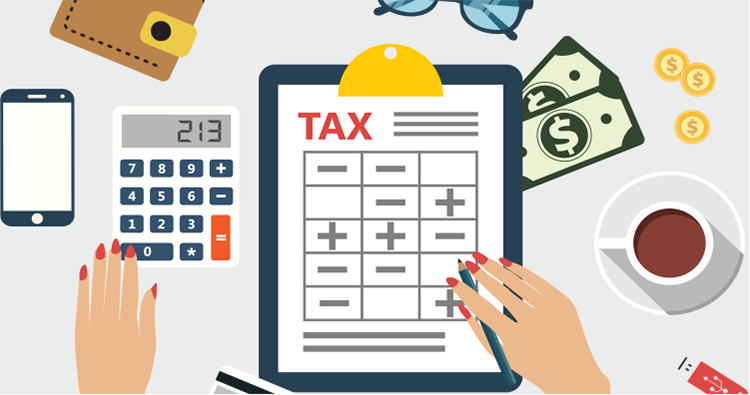- +91-9879108559
-
AMFI-Registered Mutual Fund Distributor

AMFI-Registered Mutual Fund Distributor


Time to Choose Your Pick: New Tax Regime or Old Tax Regime?
It is again the time of the year when you have to submit your investment details to your employer. This year, you will have to choose between the old tax regime or the new tax structure. Whatever tax structure you adopt, it will be effective for the entire financial year.
Here’s how the old and new tax regime compare against each other:
|
Tax Slab(in Rs.) |
Tax rate under the old regime |
Tax rate under the new tax regime |
|
0-Rs.2.5 lakhs |
0% |
0% |
|
Rs.2.5 lakhs to Rs.5 lakhs |
5% |
5% |
|
Rs.5 lakhs to Rs.7.5 lakhs |
20% |
10% |
|
Rs.7.5 lakhs to Rs.10 lakhs |
20% |
15% |
|
Rs.10 lakhs to Rs.12.50 lakhs |
30% |
20% |
|
Rs.12.50 lakhs to Rs.15 lakhs |
30% |
25% |
|
Rs.15 lakhs and above |
30% |
30% |
Finance Minister Nirmala Sitharamanin her budget speech of 2020 announced a new tax regime with more tax slabs and lower tax rates on income up to Rs.15 lakhs. However, tax payers can’t avail tax benefits such as the standard deduction of Rs.50,000, deductions under section 80C and 80D, concessions on the interest paid on home loan or rent under the new tax regime.
Advantages of the new tax regime:
Reduced tax rates and easy tax filing: When compared to the old tax system, the tax rate on the new tax regime is lower. Moreover, as exemptions are not available in this system, tax filing will be easier.
More money in hands:With the reduced tax rate, individuals can have more disposable income in their hands.
Invest in investment options in their choice: Most of the tax saving instruments have lock-in period. Many tax payers may not be comfortable in investing in these investment options due to the lock-in period or other reasons. With the new tax structure, individuals can invest in investment options of their choice.
Drawbacks of the new tax regime:
Under the new tax structure, individuals can’t avail any tax deductions under various sections. Some of the popular tax saving avenues such as investments available under section 80C and 80D, house rent, interest on home loan, leave travel concession etc. can’t be availed. The Ministry of Finance has removed around 70 exemptions out of the 120 exemptions.
Whether to choose the old tax regime or new tax regime
If you are looking for a simple answer to this question, then we hate to share the fact that there is one line answer to that question. You can arrive the right tax structure after calculating how much tax you are able to saving through both the tax structures.
To figure out the best tax structure, calculate the exemptions that you are availing and the deductions that you claim. Rent on house, travel leave allowance, food bills and phone bills might be some of the exemptions that you are currently availing. If you are salaried employee, you automatically get a tax exemption of Rs.50,000 and EPF contribution. Also, calculate the deductions that you claim against your home loan, education loan and other investments.
Now, calculate the taxable income by adding the exemptions and deductions and subtracting it from your salary. This can help you to figure out the favourable tax regime.
Let us understand it with the help of two examples. Let us consider two tax payers with an annual income of Rs.7.5 lakhs and annual income of up to Rs.10 lakhs respectively. For ease, we take that the individuals have invested the maximum amount under various heads.
Annual income of Rs.7.5 lakhs
Let us first calculate the tax payable without any exemptions and compare the old tax and new structure.
|
|
Old Tax structure |
|
New Tax structure |
|
|
Income tax slab |
Tax Rate |
Tax(in Rs.) |
Tax Rate |
Tax(in Rs.) |
|
Up to Rs.2.5 lakhs |
0 |
0 |
0 |
0 |
|
Up to Rs.5 lakhs |
5% |
12500 |
5% |
12500 |
|
Up to Rs.7.5 lakhs |
20% |
50000 |
10% |
25000 |
|
Total |
|
62500 |
|
37500 |
|
Health and education cess |
4% |
2500 |
4% |
1500 |
|
Tax payable |
|
65000 |
|
39000 |
We see that new tax structure is favourable without any tax exemptions.
Now, let us assume that the tax payer uses different benefits.
|
Annual Income with Tax Exemptions |
|
|
Annual Income |
7,50,000 |
|
Exemptions under 80C |
1,50,000 |
|
80CCD(1B) |
50000 |
|
80D |
50000 |
|
HRA |
10000 |
|
Taxable income |
490000 |
In this case, as the taxable income is below Rs.5 lakhs, the person does not have to pay any tax. So, we see that when the individual uses the different tax saving options, the tax payer does not have to pay any tax.
Annual income of Rs.10 lakhs
|
|
Old Tax structure |
|
New Tax structure |
|
|
Income tax slab |
Tax Rate |
Tax(in Rs.) |
Tax Rate |
Tax(in Rs.) |
|
Up to Rs.2.5 lakhs |
0 |
0 |
0 |
0 |
|
Up to Rs.5 lakhs |
5% |
12500 |
5% |
12500 |
|
Up to Rs.7.5 lakhs |
20% |
50000 |
10% |
25000 |
|
Up to Rs.10 lakhs |
20% |
50000 |
15% |
37500 |
|
Total |
|
112500 |
|
75000 |
|
Health and education cess |
4% |
4500 |
4% |
3000 |
|
Tax payable |
|
117000 |
|
78000 |
Here we see that new tax regime results in lesser taxes.
Let us see the impact on taxable income if we consider deductions.
|
Taxable Income with Tax Exemptions |
|
|
Annual Income |
10,00,000 |
|
Exemptions under 80C |
1,50,000 |
|
80CCD(1B) |
50000 |
|
80D |
50000 |
|
HRA |
10000 |
|
Taxable income |
740000 |
In this case, the taxable income falls below Rs.7.5 lakhs.
Now, let us compare the old tax structure with exemptions and the new tax structure.
|
|
Old Tax structure |
New Tax structure |
||
|
Income tax slab |
Tax Rate |
Tax(in Rs.) |
Tax Rate |
Tax(in Rs.) |
|
Up to Rs.2.5 lakhs |
0 |
0 |
0 |
0 |
|
Up to Rs.5 lakhs |
5% |
12500 |
5% |
12500 |
|
Up to Rs.7.5 lakhs |
20% |
50000 |
10% |
25000 |
|
Up to Rs.10 lakhs |
|
0 |
15% |
37500 |
|
Total |
|
62500 |
|
75000 |
|
Health and education cess |
4% |
2500 |
4% |
3000 |
|
Tax payable |
|
65000 |
|
78000 |
We see that the tax payer has to pay less tax if the old tax structure with exemptions is opted.
Conclusion:While many investment options offer tax benefits, tax planning should be the main focus while taking any investment decisions. Finding out the best tax regime will depend on various factors such as tax slab, deductions and exemptions availed and investment options. So, talk to your CA or financial advisor to figure out the best tax regime.
Labdhi Investments
“LABDHI KUNJ” Station Road,
Bardoli - 394601
+91 9879108559

Scan QR code to Store Our Contact Details On Your Phone.
Copyright © Labdhi Investments. All rights reserved.
Risk Factors – Investments in Mutual Funds are subject to Market Risks. Read all scheme related documents carefully before investing. Mutual Fund Schemes do not assure or guarantee any returns. Past performances of any Mutual Fund Scheme may or may not be sustained in future. There is no guarantee that the investment objective of any suggested scheme shall be achieved. All existing and prospective investors are advised to check and evaluate the Exit loads and other cost structure (TER) applicable at the time of making the investment before finalizing on any investment decision for Mutual Funds schemes. We deal in Regular Plans only for Mutual Fund Schemes and earn a Trailing Commission on client investments. Disclosure For Commission earnings is made to clients at the time of investments.
AMFI Registered Mutual Fund Distributor – ARN-96503 | Date of initial registration – 07-Jul-2014 | Current validity of ARN – 16-Jun-2026
Important Links | Disclaimer | Disclosure | Privacy Policy | SID/SAI/KIM | Code of Conduct | SEBI Circulars | AMFI Risk Factors